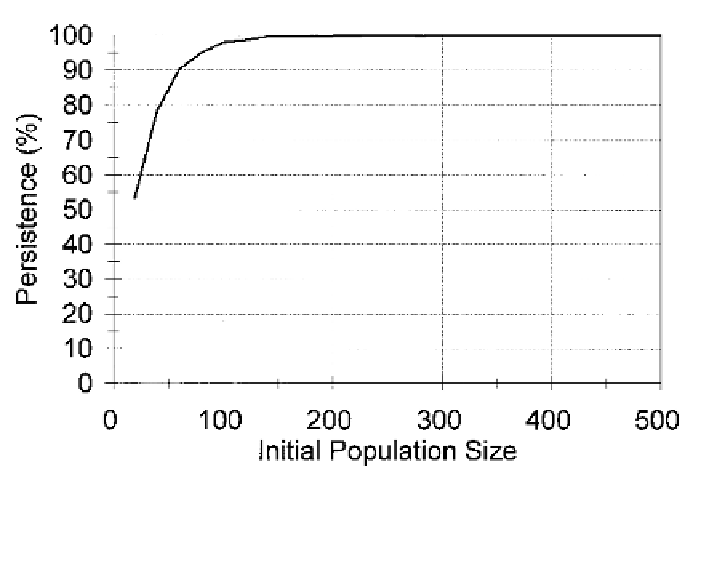Geoscience Reference
In-Depth Information
Figure 9.3
Persistence of a population as a function of initial population size (N
0
) when only demo-
graphic variation is incorporated into the model. Birth and death probabilities are both 0.5, making
the expected value of R= 0. The model was run 10,000 times to estimate the percentage of runs in
which the population persisted until t= 100.
to 84.3 percent from 53.2 percent for
R
= 0. Even though the population is
expected to increase, stochasticity can still cause the population to go extinct.
The type of stochasticity illustrated by this model is known as demo-
graphic variation. I like to call this source of variation “penny-flipping varia-
tion” because the variation about the expected number of survivors parallels
the variation about the observed number of heads from flipping coins. To illus-
trate demographic variation, suppose the probability of survival of each indi-
vidual in a population is 0.8. Then on average, 80 percent of the population
will survive. However, random variation precludes exactly 80 percent surviv-
ing each time this survival rate is applied. From purely bad luck on the part of
the population, a much lower proportion may survive for a series of years,
resulting in extinction. Because such bad luck is most likely to happen in small
populations, this source of variation is particularly important for small popu-
lations, hence the name demographic variation. The impact is small for large
populations. As the population size becomes large, the relative variation
decreases to zero. That is, the variance of
N
t
+1
/
N
t
goes to zero as
N
t
goes to



